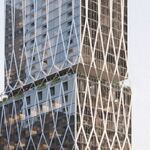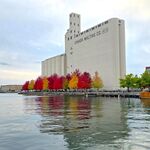I agree with ShonTron.
We shouldn't dismiss it out of hand like Adam Vaughan has, but evaluate it in a more pragmatic way. Right now, I mildly oppose it because of the exact reasons Shon has listed: difficult to divert southbound traffic north of Bloor; renders the offramp of the Gardiner useless, and makes northbound streetcar diversion impossible.
Anyway, I find that outright dismissals of one way streets, like Vaughan's, are based on a misinterpretation of Jane Jacobs' observation that after Manhattan streets were one-way-ized, bus ridership dropped. In our era, where we practically worship Jane Jacobs, it's easy to forget that a lot of her conclusions were anecdotally-derived and should be taken with a grain of salt. Could it have been that things like a drop in Manhattan employment, white flight, increasing suburbanization, and rising transit fares had more of an effect on bus ridership than converting main streets to one way?




